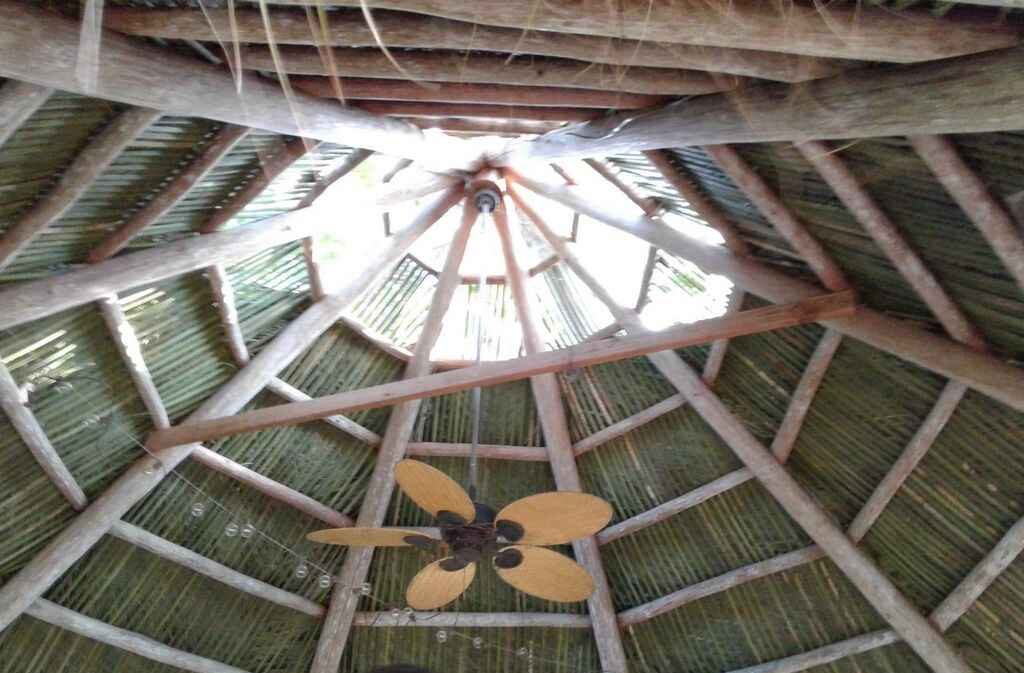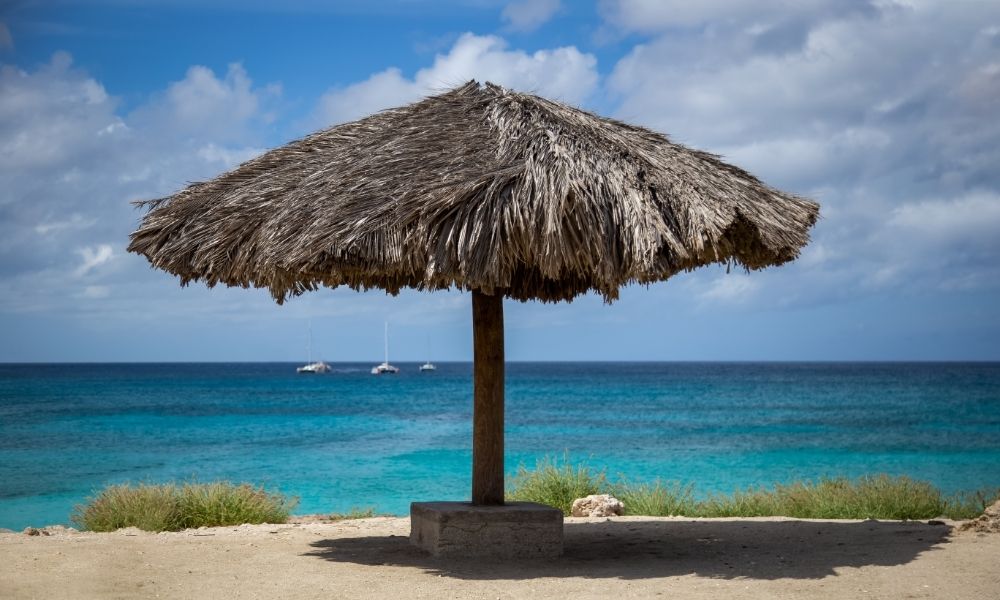The lifespan of a thatched roof will depend on things like high-quality thatching materials, the thatcher’s skill, the roof pitch, weather conditions, and the maintenance you provide. So, assuming the first four factors are taken care of, we’ll drive our focus to the ideal tiki hut maintenance. By following these tips, you’ll make your commercial tiki hut last as long as it should.
Hang your hammock, sit back, and read through this fun and on-point piece of writing.
Tiki Hut Maintenance: Do These Four Things to Make Your Tiki Hut Last!
Want your tiki bar or tiki restaurant to last longer? Follow these four tiki hut maintenance tips. Firstly, control birds and rodents. Then, prevent the appearance of tiki hut caterpillars, and rethatch defective areas as soon as possible. Last, you need to avoid mold growth.
Install Mesh Netting to Keep Birds and Rodents Away
Birds and rodents like to shelter in palm thatch.
Do you know why?
Thatch is dry. It’s the ideal material for birds to create nests.
In previous years, birds used to be a big nuisance to tiki hut owners. And birds could still become a problem for you if you don’t know how to deal with them.
We recommend installing mesh netting over your tiki hut roofs to prevent birds from landing over your tiki hut and use palm thatch as their nest fabric. Another option is to attach a small wire or fishing line on top of your tiki hut. As a result, you’ll prevent birds from nesting on the ridges of your tiki hut or robbing your palm thatch to make their nests elsewhere.
Also, thatch is warm, and it makes the perfect shelter for rodents. So, it’s likely that squirrels, rats, and mice hide in your tiki hut. These rodents can gnaw and burrow into the layers of your thatched roof, which can significantly undermine its structural integrity.
Learn to Deal with Tiki Hut Caterpillars
When we got into the tiki hut business, we thought that caterpillars only fed on green grass and leaves.
Oh boy, we’re so wrong.
Two caterpillar species feed on dried thatched leaves of sabal palms.
These summer vibe killers are the Hypsopygia Nostralis and the Simplicia Cornicalis.
Due to their association with palm thatch roofs, both species are called tiki hut caterpillars.
These caterpillars feed on your tiki hut thatch, and when they grow up, they evolve into ugly moths.
Their feeding habits can cause substantial damage to your tiki hut. Sometimes tiki hut owners have to replace a part or even the whole affected roof.
Simplicia Cornicalis’s favorite food is palm debris and thatch. And the adult moths deposit their eggs on thatched roofs. Caterpillars usually appear two or three weeks after installing the tiki hut roof.
They are sneaky thatch eaters. You won’t see them because they hide during the day and feed at night.
How Can You Prevent a Tiki Hut Caterpillar Infestation?
You should apply insecticides containing Bifenthrin to both sides of the palm thatch before assembling the tiki hut roof. This insecticide will kill moth eggs for sure.
You can buy products like Scimitar, Talstar, and Tempo to prevent damage to your thatched roof.
How to Treat Infested Tiki Hut Roofs?
You need to apply the pesticide Bacillus Thuringiensis. Do it over the top of the roof and under it. We recommend using this pesticide at dusk when the caterpillars are emerging from between layers of the thatch to feed.
You can use a concentrated spray to get this pesticide to the inside layers of thatched huts and for greater efficiency.
Rethatch Tiki Hut Defective Areas Immediately

A high-quality tiki hut construction will need less maintenance over its lifespan. So, you must hire a professional tiki hut builder to create yours.
Original tiki huts are built using natural materials like dried palm fronds.
Some of the reasons to do partial rethatching in your tiki hut are missing thatch panels, signs of leaks, mildew, rot, and pest damage from caterpillars and termites.
So, when you notice some missing thatch panels, you need to hire an experienced team to replace thatch panels.
If you recently built your tiki hut in your beach resort and if your warranty still covers repairs, you should contact the tiki hut builder to fix the problem.
It’s essential to fix any loose thatching or other thatch roof repair immediately. Otherwise, the problem could get worse fast.
Doing repairs as soon as they appear will increase the lifespan of your thatched roof.
Prevent Mold to Make Thatched Roof Last

All genuine tiki huts are built from natural materials, which gives them their tropical look and charm.
But there is a trade-off to using natural materials. They decay faster than synthetic thatching materials.
One of the most common problems with natural thatch roofs is mold. And it’s better to prevent fungal growth than to deal with it.
If you live in Florida’s humid climate but still want to have a nice-looking tiki hut, we recommend buying a thatch sealer.
By locking out moisture, a sealer will decrease the risk of damage due to humidity. And it’ll also inhibit fungal growth.
Applying a thatch sealer will extend your thatched roof’s lifespan for approximately two years.
Also, the sealer preserves the natural, earthy look of the thatch. So, by spraying the sealer on both sides of the thatch, it gives you the best of both worlds. Your tiki hut will look great, and it will last longer.
Follow Our Tips So that Your Hotel/Resort Guests Can Enjoy Tiki Huts Longer
The maintenance of a palm-thatched roof is delicate. But the burden becomes lighter when you know what you should do.
Birds, rodents, caterpillars, and mold are all enemies of the tropical vacation atmosphere. Don’t let them interfere and destroy your commercial property.
Instead, keep on top of your tiki hut maintenance and have it ready for your guests to have an unforgettable vacation time.
In case you need expert tiki hut maintenance, call us to fix your thatched roof.

